
| Wave-lined Geometrid (one synonym : Passa latifasciata Walker, 1866) DIPTYCHINI, ENNOMINAE, GEOMETRIDAE, GEOMETROIDEA | (donherbisonevans@yahoo.com) and Stella Crossley |
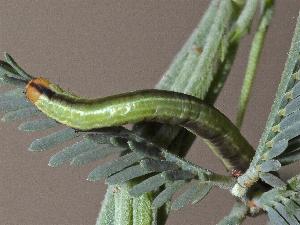
early instar
(Photo: Elaine McDonald,
Nicholls Rivulet, Tasmania)

| Wave-lined Geometrid (one synonym : Passa latifasciata Walker, 1866) DIPTYCHINI, ENNOMINAE, GEOMETRIDAE, GEOMETROIDEA | (donherbisonevans@yahoo.com) and Stella Crossley |

early instar
(Photo: Elaine McDonald,
Nicholls Rivulet, Tasmania)
The Caterpillar is green and smooth, with a yellowish head, and a dark line running from over the head to the tail. It is a true looper, with only one pair of ventral prolegs.

Later instars have a green head, and develop pale lines along the body, and narrow pale rings between segments, but still have the dark line over the head and along the back.

Even later instars develop pale yellow lines along the back, but still have the dark line over the head.
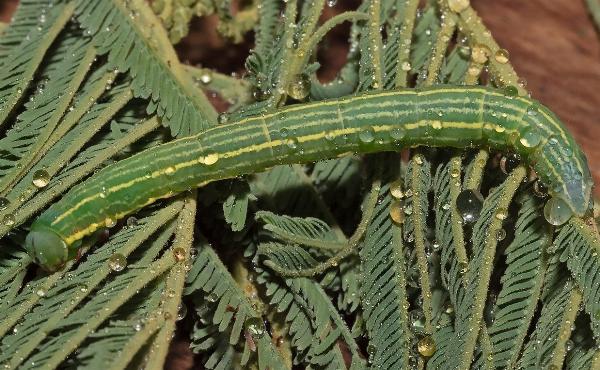
The final instar grows to a length of about 2.5 cms. It pupates under the soil.
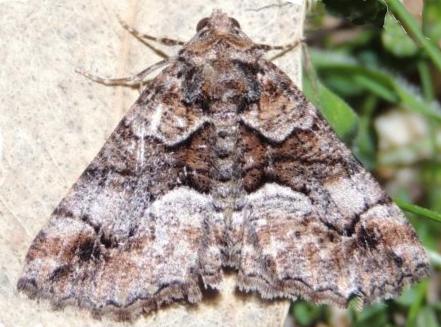
The adult moth has fawn wings with wavy patterns on them. In normal resting position: the wings are laid out flat, and the forewings cover the hindwings.
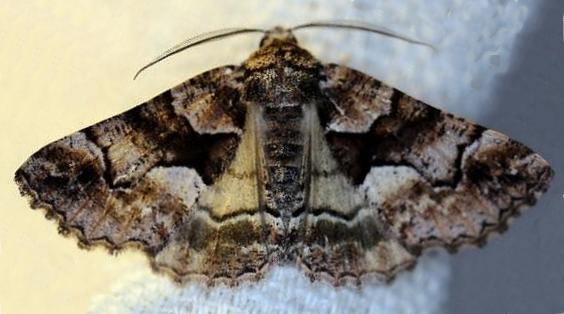
The males and female moths are similar except that the males have feathery antennae, and the females have thread-like antennae.
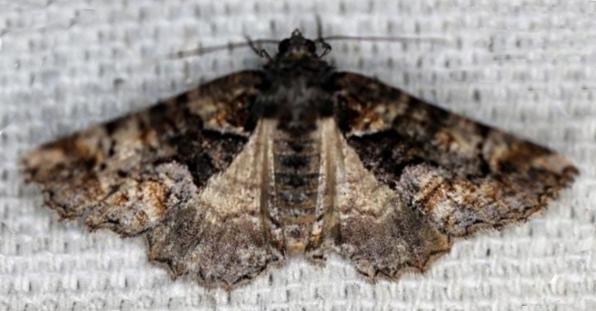
The wingspan is about 4 cms.
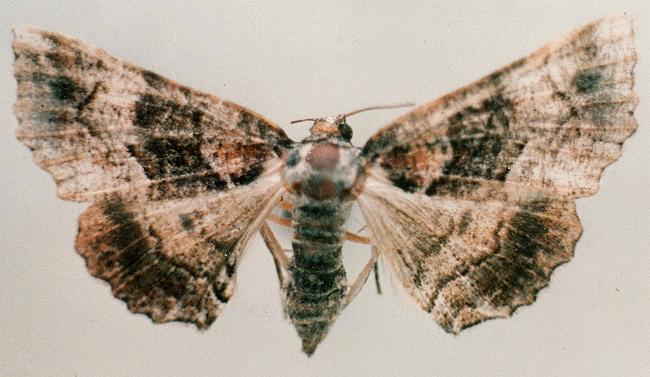
The species is found over the south-eastern quarter of Australia, including:
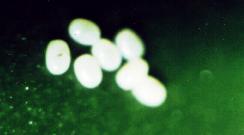
The eggs are white and oval. They are laid in clusters or strings of half a dozen or so, on leaves of a food plant.
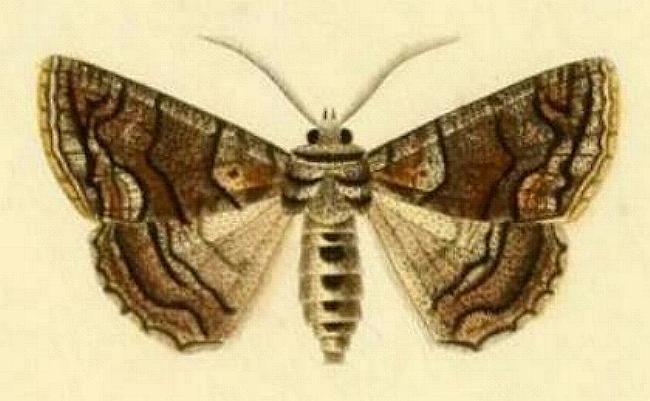
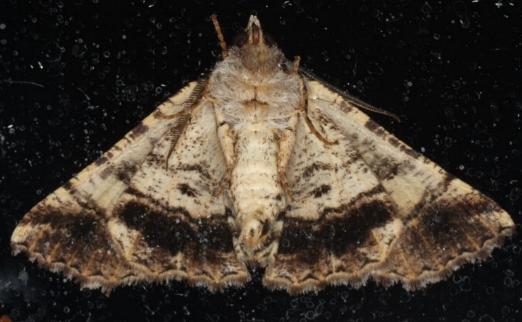
Further reading :
Ian F.B. Common,
Moths of Australia,
Melbourne University Press, 1990, fig. 34.15, p. 365.
Achille Guenée,
Uranides et Phalénites,
in Boisduval & Guenée:
Histoire naturelle des insectes; spécies général des lépidoptères,
Volume 9, Part 9 (1857), p. 224, No. 335, and also
Plate 5, fig. 4.
Marilyn Hewish,
Moths of Victoria: Part 5 - Satin Moths and Allies - GEOMETROIDEA (A),
Entomological Society of Victoria, 2014, pp. 6-7, 16-17.
Catherine J. Young,
Characterisation of the Australian Nacophorini and a Phylogeny for the
Geometridae from Molecular and Morphological Data,
Ph.D. thesis, University of Tasmania, 2003.
 caterpillar |  butterflies |  Lepidoptera |  moths |  caterpillar |
(updated 20 July 2010, 16 September 2013, 16 January 2016, 9 October 2018, 20 October 2020, 11 October 2021)